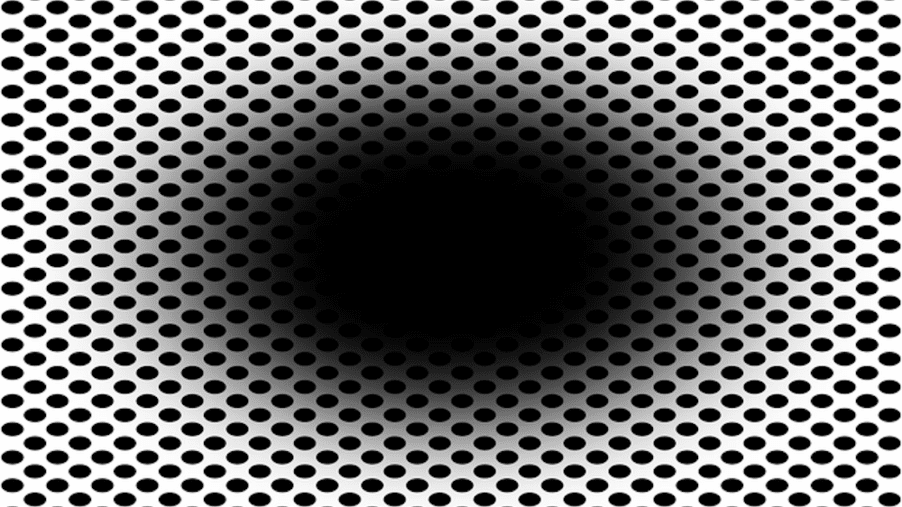If you look at the image, there’s a good chance things will get trippy very fast. The reason why the “black hole” at the middle may appear to be expanding is because your pupil may be expanding as your brain thinks you’ll soon enter a dark place.

Optical illusions are nothing new. They’re often confusing or intriguing, but according to a new study, they can sometimes teach us a little bit about how our brains work.
Take the image above, for instance. It’s a simple, static image; and yet, some 80% of people who look at the study will see the black hole expanding. Unlike other optical illusions, where you can kind of see how your brain would be tricked, it’s not immediately clear how this seemingly inconspicuous image works its magic.
Expanding darkness
To get to the bottom of things, a team of researchers used infrared to track the eyes of 50 participants as they were looking at the illusion. They found that response to the illusion is triggered by a dilation of the pupil; the stronger the people perceived it, the more the pupil dilated. However, 14% of participants did not seem to have any pupil reaction at all, and did not appear to “see” the illusion.
The researchers tested different colors and different backgrounds, finding that lighter colors produce less pronounced effects, and the strongest effect was observed for black ellipses on a magenta background. An opposite effect (of pupil constriction) was also observed when the ellipses were white against a dark background, but this effect was also less pronounced.
“We asked observers to rate the magnitudes of illusory motion or expansion of black holes, and these predicted the degree of dilation of the pupil, measured with an eye tracker. In contrast, when the “holes” were colored (including white), i.e., emitted light, these patterns constricted the pupils, but the subjective expansions were also weaker compared with the black holes,” the researchers write in the study.
The image creates a sense of movement towards the center, as if you’re either moving into a tunnel or another dark place. Your brain sees this as a cue to prepare and anticipate the change in light by adjusting the pupil diameter.

The pupil is the black part of your eye that allows light to reach the retina. It’s black because it attracts and absorbs rays of light. The diameter of the human pupil can vary between 2 and 8 mm, changing depending on the amount of light (although emotional changes can also change the pupil diameter). Other animals can exhibit even more striking pupil changes, with cats being able to expand their pupils ten times more than humans, not just in response to light, but also in response to excitement, surprise, or fear.
What’s striking about this new illusion is that even though it’s a totally static image, it creates a sense of movement toward the center, as if you’re moving into a dark hole or tunnel. It’s that sensation which causes your pupils to dilate. Your brain believes you’re about to enter into a darker environment and prepares your eyes to handle the decreased level of light it expects.
This also says a bit about how our brains work. Essentially, it shows that the brain and pupil aren’t only responding to physical stimuli — they’re anticipating them. This makes a lot of sense because the brain has an enormous amount of information to absorb and process, and simply responding to things isn’t very efficient. Anticipating things can be very useful, even though it does leave our brain vulnerable to illusions such as this one. In the real world, however, illusions are rare and this brain shortcoming is perfectly acceptable.

The results fit in with another 2012 study discussing bright optical illusions (such as the so-called Asahi illusion presented above), where it was found that pupils tend to constrict, as if anticipating a lot of light coming in. The Asahi illusion, in particular, resembles the glare of the sun partially obstructed by vegetation, so it makes sense that the brain would prepare the pupil for the possibility of a lot of light coming in.
Ultimately, the way we perceive the world around us isn’t exactly the way the world is. Our brain plays a constant guessing and approximation game with the information it receives from the world around us, and what we perceive is basically a version of the world that we can handle. In a way, you could say the entire world we perceive around is an illusion.
The study was published in Frontiers in Human Neuroscience.






